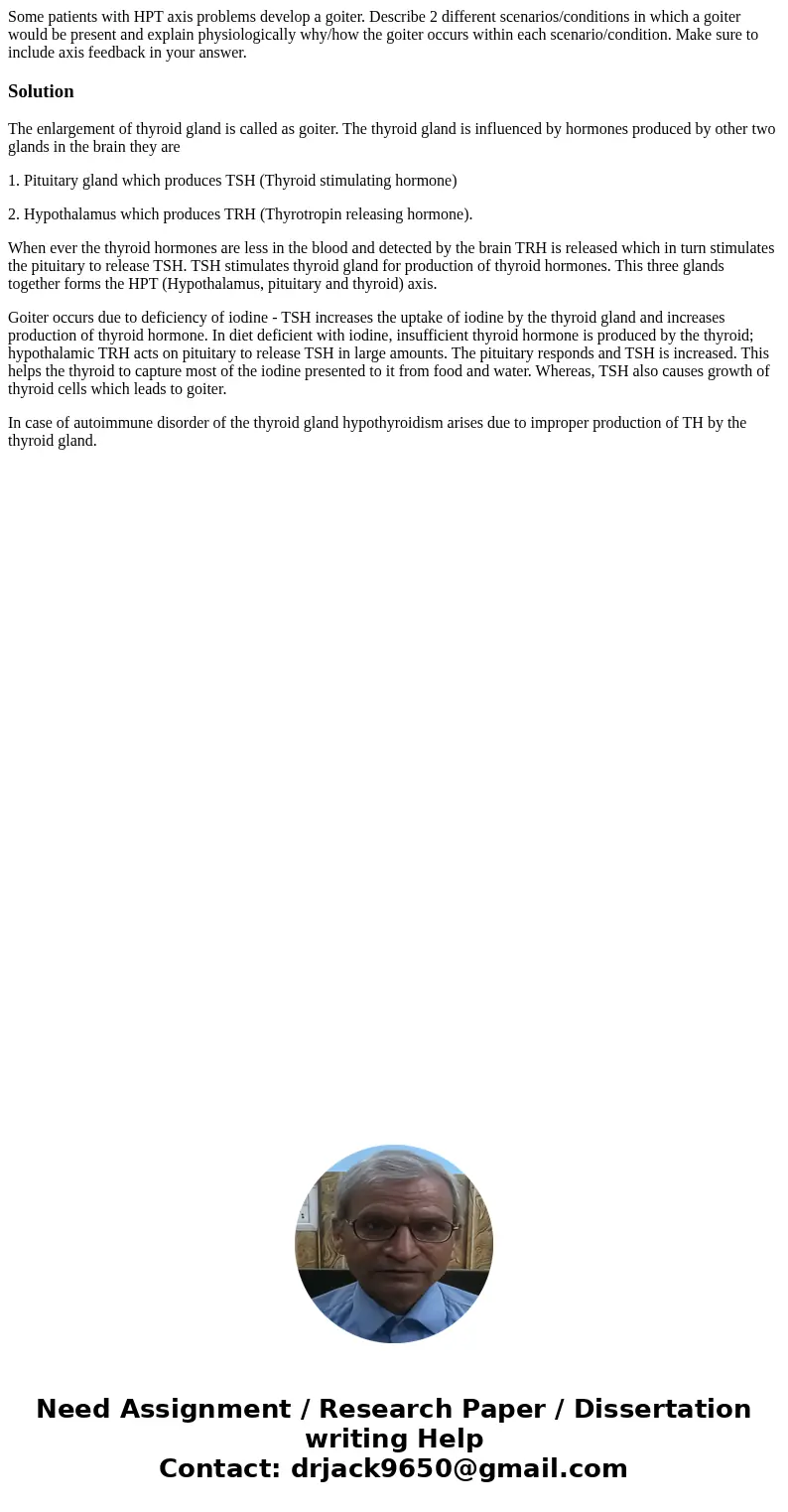Some patients with HPT axis problems develop a goiter Descri
Some patients with HPT axis problems develop a goiter. Describe 2 different scenarios/conditions in which a goiter would be present and explain physiologically why/how the goiter occurs within each scenario/condition. Make sure to include axis feedback in your answer.
Solution
The enlargement of thyroid gland is called as goiter. The thyroid gland is influenced by hormones produced by other two glands in the brain they are
1. Pituitary gland which produces TSH (Thyroid stimulating hormone)
2. Hypothalamus which produces TRH (Thyrotropin releasing hormone).
When ever the thyroid hormones are less in the blood and detected by the brain TRH is released which in turn stimulates the pituitary to release TSH. TSH stimulates thyroid gland for production of thyroid hormones. This three glands together forms the HPT (Hypothalamus, pituitary and thyroid) axis.
Goiter occurs due to deficiency of iodine - TSH increases the uptake of iodine by the thyroid gland and increases production of thyroid hormone. In diet deficient with iodine, insufficient thyroid hormone is produced by the thyroid; hypothalamic TRH acts on pituitary to release TSH in large amounts. The pituitary responds and TSH is increased. This helps the thyroid to capture most of the iodine presented to it from food and water. Whereas, TSH also causes growth of thyroid cells which leads to goiter.
In case of autoimmune disorder of the thyroid gland hypothyroidism arises due to improper production of TH by the thyroid gland.

 Homework Sourse
Homework Sourse